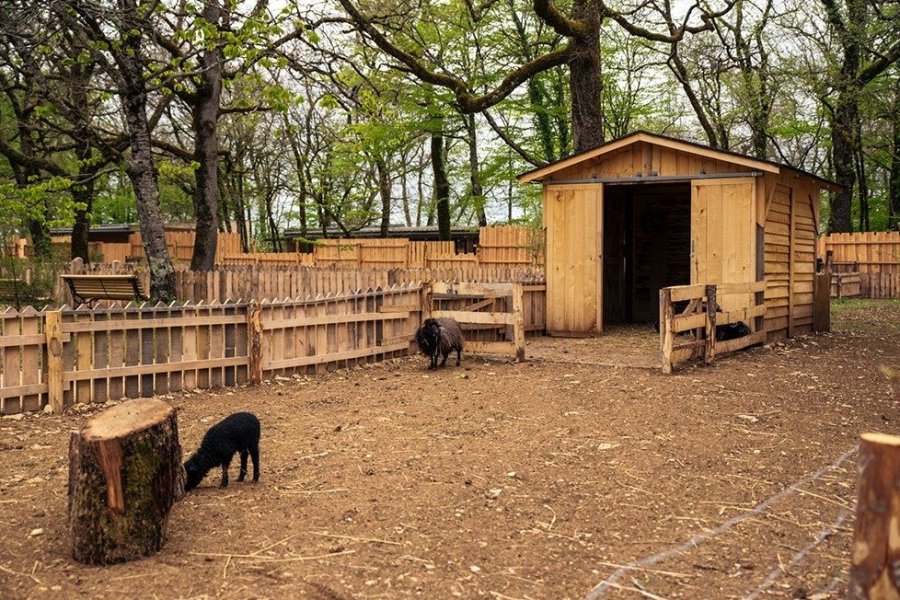
Odyssey Seed, a new odyssey to discover at Zoodyssey animal park
Recommended by Tanguy REVAULT
Every year since 2018, Zoodyssée has offered new features while keeping its deep identity as a wildlife park. The objective of the place is ...
The Deux-Sèvres is a department in the center-west of France, with its capital Niort, and belongs to the Nouvelle-Aquitaine region. Why the Deux-Sèvres? In reference to the presence on this territory of the Sèvre nantaise, a tributary of the Loire, and the Sèvre niortaise which flows into the Atlantic Ocean. Its capital, Niort, is located in the hinterland. A lot of charm for this destination around jewels like the Marais Poitevin, a very particular biotope that can be discovered by boat, on foot or by bike. One appreciates on this picturesque territory the unusual market on the water. Moreover, this land is not lacking in flavors and gives treasures such as saffron and truffles and perpetuates the tradition of peasant recipes such as farci, a terrine of green leaves and pork, or the fouace de la Mothe-Saint-Héray, also called fouace de Rabelais, between bread and brioche, with a well-kept secret, which has been kneaded in La Mothe since the 16th century. You can pedal on this territory without important difference in level and paddle on the Sèvre niortaise river up to the Marais while enjoying the romantic landscapes along the water or walk in the state forest of the Chambrille valley. So many opportunities to recharge your batteries in the open air. What else can you do? Visit a museum dedicated to Protestantism and the Huguenots before going to sleep under a yurt in the middle of a meadow where these Poitou donkeys, recognizable by their Saint Martin's cross on their gray dress, are frolicking. It is the Poitou all sweet.
When to go to the Deux-Sèvres ? Because of the mild climate during five months, from June to October, the weather conditions are pleasant for outdoor activities. In winter showers are frequent. In spring the temperature rises only gradually. It is necessary to wait for the summer to benefit from the heat from the early morning. Summer is very pleasant except for a few storms. Stay tuned to the local weather forecast. As for autumn, it is often like an Indian summer and the heat slowly decreases until the harshness of winter. To sum up, avoid December, January and February if you want to enjoy the outdoors. The Deux-Sèvres is home to part of the Marais Poitevin Regional Nature Park. It is in the early morning and at dusk that you will most easily observe the wildlife of this biotope very rich in biodiversity.
From March to November, festivals are scheduled throughout the department. Of course, it is in summer that the concentration of these cultural and festive appointments are the most numerous. We can mention the festival of Ménigoute at All Saints' Day, the International Ornithological Film Festival (FIFO) which attracts bird lovers from all over the world.
At 80 km from the ocean, the Deux-Sèvres are logically and undeniably subject to an oceanic climate. This one is distilled in the Deux-Sèvres with a certain softness. Between June and October the temperature is close to 20°C. In winter, the average temperature is 9°C. December is the rainiest month (about 160 mm) and the least pleasant for this destination.

Recommended by Tanguy REVAULT
Every year since 2018, Zoodyssée has offered new features while keeping its deep identity as a wildlife park. The objective of the place is ...

Recommended by Floriane RAVARD
The Regards noirs festival is an event dedicated to detective fiction, organized by the City of Niort. Launched in 2010, it gained momentum in ...
When to go to the Deux-Sèvres ? Because of the mild climate during five months, from June to October, the weather co...
Read more about it
At 80 km from the ocean, the Deux-Sèvres are logically and undeniably subject to an oceanic climate. This one is dis...
Read more about it